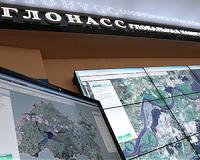 |
Huntsville AL (SPX) Aug 12, 2010 NASA's first microsatellite designed to create a capability that increases opportunities for secondary, scientific and technology payloads, or rideshares, to be flown at lower cost than before has arrived at Kodiak Island, Alaska, to begin final launch preparations. The Fast, Affordable, Science and Technology Satellite, or FASTSAT, arrived at the Kodiak Launch Complex on Aug. 10 from NASA's Marshall Space Flight Center in Huntsville, Ala. Following final checkout, the just under 400-pounds satellite will be integrated on a Minotaur IV launch vehicle as one of three secondary payloads. "FASTSAT was selected as an 'outside the box' solution that afforded a highly synergistic concept which satisfied experiment, payload and launch schedule requirements," said Mark Boudreaux, FASTSAT project manager at the Marshall Center. "This milestone brings us one step closer to developing a unique, small satellite platform and the environment needed to perform low-cost research in space." Outfitted with six technology and atmospheric experiments, the microsatellite will lift off from the Kodiak complex no earlier than Sept. 24. The satellite will be launched into a 404-mile circular orbit to perform the 180-day mission. The overall objective of the FASTSAT mission is to demonstrate the capability to build, design and test a microsatellite platform to enable governmental, academic and industry researchers to conduct low-cost scientific and technology experiments on an autonomous satellite in space. Mission operations for FASTSAT and all six experiments will be managed from the small satellite control room at the Huntsville Operations and Science Control Center at the Marshall Center. FASTSAT will fly on the STP-S26 mission - a joint activity between NASA and the U.S. Department of Defense Space Test Program. The satellite was designed, developed and tested at the Marshall Center in partnership with the Von Braun Center for Science and Innovation and Dynetics Inc. of Huntsville. Dynetics provided key engineering, manufacturing and ground operations support for the new microsatellite. Thirteen local firms, as well as the University of Alabama in Huntsville, were also part of the project team.
Share This Article With Planet Earth
Related Links NASA small satellite missions Space Technology News - Applications and Research
 Acoustic Tests On New Glonass-K Satellite Completed
Acoustic Tests On New Glonass-K Satellite CompletedMoscow, Russia (RIA Novosti) Aug 05, 2010 Acoustic tests on a new generation Glonass-K navigation satellite have been completed at a plant in southern Russia. "These types of experimental tests were carried out to confirm the resilience of the Glonass-K satellite to the acoustic pressure which will be applied on it when it is orbited," a statement by the plant said. "The tests were successful." The Glonass-K, a new generatio ... read more |
|
| The content herein, unless otherwise known to be public domain, are Copyright 1995-2010 - SpaceDaily. AFP and UPI Wire Stories are copyright Agence France-Presse and United Press International. ESA Portal Reports are copyright European Space Agency. All NASA sourced material is public domain. Additional copyrights may apply in whole or part to other bona fide parties. Advertising does not imply endorsement,agreement or approval of any opinions, statements or information provided by SpaceDaily on any Web page published or hosted by SpaceDaily. Privacy Statement |